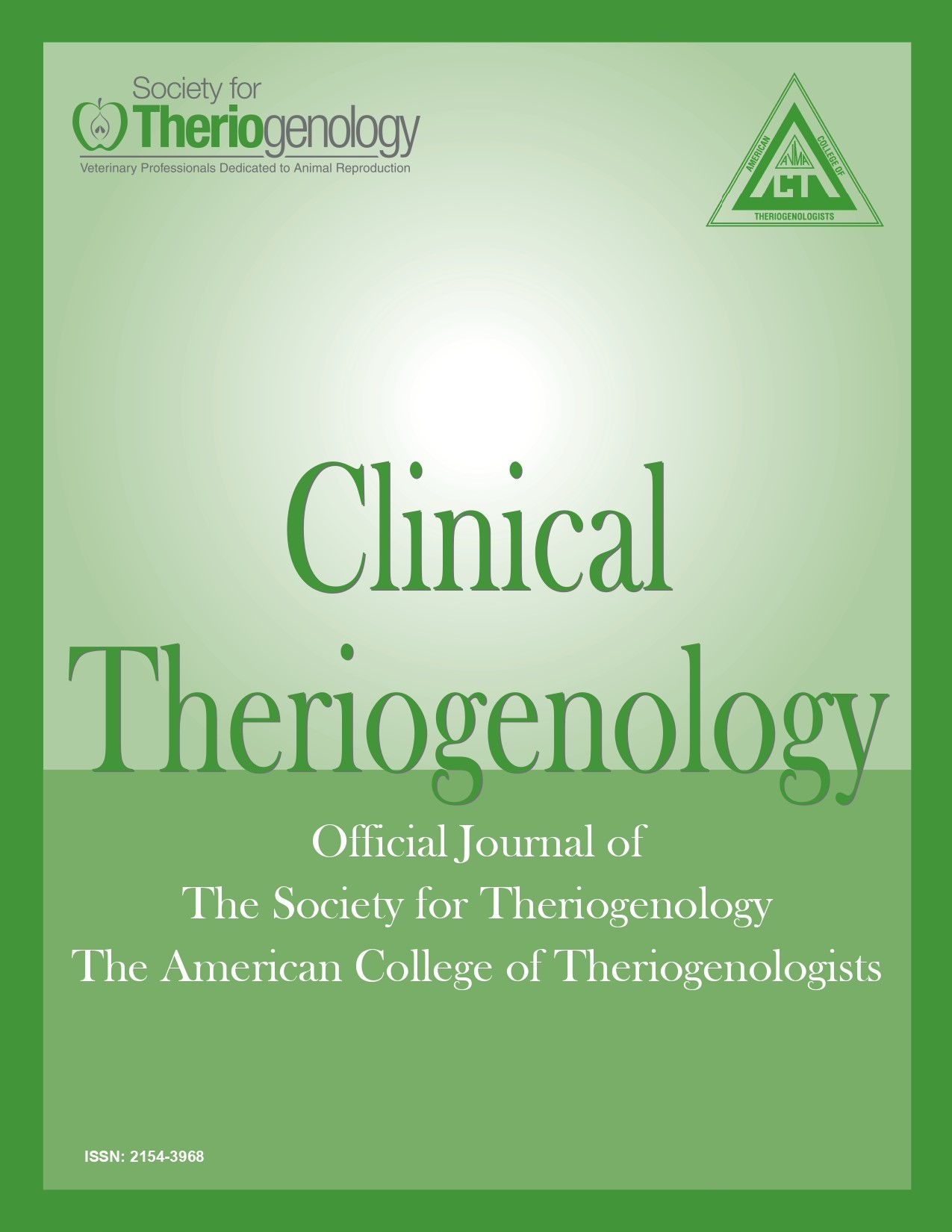Genomic selection in dairy cattle: impact and contribution to the improvement of bovine fertility
Abstract
Genomic selection has revolutionized the dairy cattle breeding industry, with ripple effects that have greatly impacted dairy herd management. Rate of genetic progress has increased markedly, especially in Holstein and Jersey breeds, for production, health, and fertility traits. Genomic testing of young bulls and heifers provides greater accuracy of selection decisions involving traditional fertility traits, such as daughter pregnancy rate, while creating the opportunity to improve novel traits, such as fetal loss. Cameras, wearable sensors, and other precision livestock farming technologies will allow selection for traits such as estrus duration and intensity that require high frequency phenotyping. At the same time, synergies between genomic testing and advanced reproductive technologies have led to rapid and widespread adoption of sexed semen, coupled with mating of females whose offspring are not needed as herd replacements to beef sires. This strategy produces added-value crossbred calves for the beef supply chain, while allowing genetically inferior mature cows that are still producing at a high level to remain in the herd for additional lactations.
Downloads
References
2. VanRaden PM, Cole JB, Neupane M, et al: Net merit as a measure of lifetime profit: 2021 revision. AIP Research Report NM$8 (05–21). Available from: https://www.ars.usda.gov/ARSUserFiles/80420530/Publications/ARR/nmcalc-2021ARR-NM8.pdf [cited 16 August 2023].
3. Berry DP: Invited review: beef-on-dairy—the generation of crossbred beef × dairy cattle. J Dairy Sci 2021;104:3789-3819. doi: 10.3168/jds.2020-19519
4. Lauber MR, Peñagaricano F, Fourdraine RH, et al: Characterization of semen type prevalence and allocation in Holstein and Jersey females in the United States. J Dairy Sci 2023;106:3748-3760. doi: 10.3168/jds.2022-22494
5. Giordano JO, Sitko EM, Rial C, et al: Symposium review: use of multiple biological, management, and performance data for the design of targeted reproductive management strategies for dairy cows. J Dairy Sci 2022;105:4669-4678. doi: 10.3168/jds.2021-21476
6. Wiltbank MC, Baez GM, Garcia-Guerra A, et al: Pivotal periods for pregnancy loss during the first trimester of gestation in lactating dairy cows. Theriogenology 2016;86:239–253. doi: 10.1016/j.theriogenology.2016.04.037
7. Sigdel A, Bisinotto RS, Peñagaricano F: Genetic analysis of fetal loss in Holstein cattle. J Dairy Sci 2022;105:9012-9020. doi: 10.3168/jds.2022-22000
8. Lopez H, Satter LD, Wiltbank MC: 2004. Relationship between level of milk production and estrous behavior of lactating dairy cows. Anim Reprod Sci 2004;81:209-223. doi: 10.1016/j.anireprosci.2003.10.009
9. Cerri RLA, Burnett TA, Madureira AML, et al: Symposium review: linking activity-sensor data and physiology to improve dairy cow fertility. J Dairy Sci 2021;104:1220-1231. doi: 10.3168/jds.2019-17893
10. Chasco JA, Chebel RC, Weigel KA, et al: Estrus expression in dairy cows: phenotyping, genetic variability, and association with reproductive performance. J Dairy Sci 2023;106 (Suppl. 1):53.
11. Walsh SW, Mossa F, Butler ST, et al: 2014. Heritability and impact of environmental effects during pregnancy on antral follicle count in cattle. J Dairy Sci 2014;97:4503-4511. doi: 10.3168/jds.2013-7758
12. Grala TM, Price MD, Kuhn-Sherlock B, et al: Investigating anogenital distance and antral follicle count as novel markers of fertility within a herd of cows with positive or negative genetic merit for fertility traits. J Dairy Sci 2021;104:12939-12952. doi: 10.3168/jds.2020-19948
13. Ribeiro ES, Bisinotto RS, Lima FS, et al: Plasma anti-Müllerian hormone in adult dairy cows and associations with fertility. J Dairy Sci 2014;97:6888-6900. doi: 10.3168/jds.2014-7908
14. Gobikrushanth M, Purfield DC, Colazo MG, et al: The relationship between serum anti-Müllerian hormone concentrations and fertility, and genome-wide associations for anti-Müllerian hormone in Holstein cows. J Dairy Sci 2018;101:7563-7574. doi: 10.3168/jds.2017-13940
15. Harstine B, Utt M, DeJarnette JM: Review: integrating a semen quality control program and sire fertility at a large artificial insemination organization. Animal 2018;12:s63-s74. doi: 10.1017/S1751731118000319
16. Kuhn MT, Hutchison JL: Prediction of dairy bull fertility from field data: use of multiple services and identification and utilization of factors affecting bull fertility. J Dairy Sci 2008;91:2481-2492. doi: 10.3168/jds.2007-0743
17. Ortega MS, Moraes JGN, Patterson DJ, et al: Influences of sire conception rate on pregnancy establishment in dairy cattle. Biol Reprod 2018;99:1244-1254. doi: 10.1093%2Fbiolre%2Fioy141
18. VanRaden PM, Olson KM, Null DJ, et al: Harmful recessive effects on fertility detected by absence of homozygous haplotypes. J Dairy Sci 2011;94:6153-6161. doi: 10.3168/jds.2011-4624
19. Pacheco HA, Rossoni A, Cecchinato A, et al: Deciphering the genetic basis of male fertility in Italian Brown Swiss dairy cattle. Sci Rep 2022;12:10575. doi: 10.1038/s41598-022-14889-1

This work is licensed under a Creative Commons Attribution-NonCommercial 4.0 International License.
Authors retain copyright of their work, with first publication rights granted to Clinical Theriogenology. Read more about copyright and licensing here.





